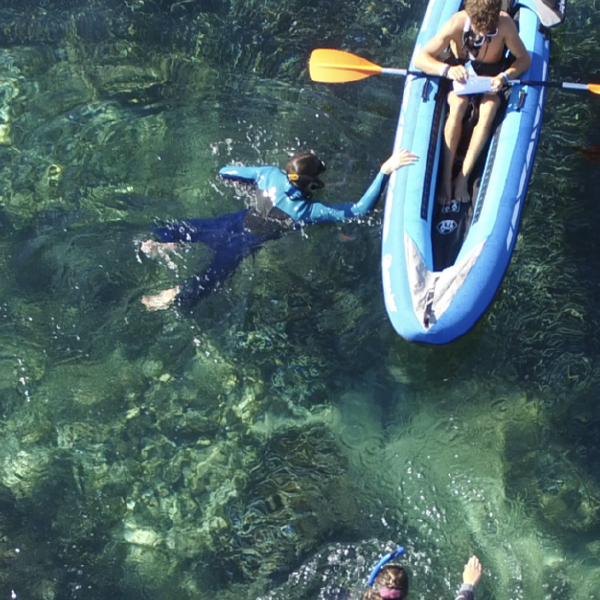MSc Ocean Science, Conservation & Innovation

STUDY, REVEAL, PROTECT OUR MEDITERRANEAN SEA
Our project federates students, scientists and associations in order to study and preserve the marine biodiversity of the Lerins Islands and the Bay of Cannes since 2012
A natural area subject to increasing anthropic pressures

A typical assemblage of the rocky habitat around Lérins.
The archipelago is a Natura 2000 zone which shelters a typical ecosystem of the North Western Mediterranean. But nestled only one kilometer from Cannes, it is exposed to the urbanization of the continent and to summer tourism.
Local authorities and associations are involved in the protection of this ecosystem. The city of Cannes has implemented a series of protection measures, local associations help the public to better protect the ecosystem, and consultancy companies measure the physico-chemical parameters of the water regularly.
However, the biodiversity itself was only very occasionally studied. This requires time, money, skills and manpower. This is what our project wants to offer since 2012 by bringing together scientists, students and local associations.
Local authorities and associations are involved in the protection of this ecosystem. The city of Cannes has implemented a series of protection measures, local associations help the public to better protect the ecosystem, and consultancy companies measure the physico-chemical parameters of the water regularly.
However, the biodiversity itself was only very occasionally studied. This requires time, money, skills and manpower. This is what our project wants to offer since 2012 by bringing together scientists, students and local associations.
Who we are

The group of students during the operations at sea in September 2023.
The project is led by the students and staff of the MSc MARRES at Université Côte d'Azur. For 10 years now, students have been taking turns studying the status of the marine ecosystem and monitoring its evolution. Each year the same study follows the biodiversity observable in 60 stations of 30m2 all around the archipelago. Other studies are being developed as the project is growing.
Now, about 50 students from the MARRES program spend four days on the islands in early September. The first day is mainly used to prepare, the second to conduct the "historical" study of the 60 stations around the islands (leg 1), the third day is used to test more precise scientific hypotheses imagined by the Year 2 students (leg 2), the fourth day is used to save the data in the databases and discuss the first results.
Now, about 50 students from the MARRES program spend four days on the islands in early September. The first day is mainly used to prepare, the second to conduct the "historical" study of the 60 stations around the islands (leg 1), the third day is used to test more precise scientific hypotheses imagined by the Year 2 students (leg 2), the fourth day is used to save the data in the databases and discuss the first results.
What we do

A group of observer during the leg 1 of the operations at Sea, around a station of observation
The main scientific goal of the project is to understand how marine biodiversity around the Lerins Islands is structured among environmental and human factors.
For this, the initial mission (now called leg 1) is articulated in 6 teams distributed in 60 stations of 30m2 every 200m around the islands. The observable biodiversity is reported, along with human and environmental factors.
In recent years, specific hypotheses are tested (leg 2) involving for example the impact of an aquaculture farm on water quality and biodiversity, the comparison of methods, the impact of hydrodynamics (waves) on animal and plant communities...
For this, the initial mission (now called leg 1) is articulated in 6 teams distributed in 60 stations of 30m2 every 200m around the islands. The observable biodiversity is reported, along with human and environmental factors.
In recent years, specific hypotheses are tested (leg 2) involving for example the impact of an aquaculture farm on water quality and biodiversity, the comparison of methods, the impact of hydrodynamics (waves) on animal and plant communities...
Full part of the MARRES learning strategy

Beyond its scientific and conservation aspects, the Lérins Biodiversité project was imagined as a pedagogical tool to consider the scientific approach in a very concrete way and as a whole.
Students think about the sampling design to answer specific scientific questions, live a mission at sea to collect data, then study their own data in class (SCAN - the Scientific Adventure, MALM - Multivariate Analysis & Modeling, TOOLBOX - Scientific Communication) instead of using book exercises. They can also use their results in scientific outreach with the public, for example in the framework of the "MARRES To The World" initiative.
This practical approach allows students to be more engaged in their understanding of statistics in particular and of the scientific process in general.
Students think about the sampling design to answer specific scientific questions, live a mission at sea to collect data, then study their own data in class (SCAN - the Scientific Adventure, MALM - Multivariate Analysis & Modeling, TOOLBOX - Scientific Communication) instead of using book exercises. They can also use their results in scientific outreach with the public, for example in the framework of the "MARRES To The World" initiative.
This practical approach allows students to be more engaged in their understanding of statistics in particular and of the scientific process in general.
A sneak peek on the project
Video from R. Weston




















